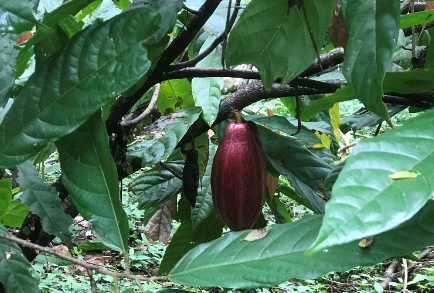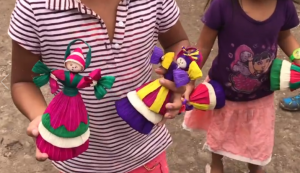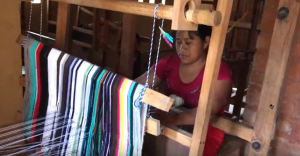
Often lost or forgotten, La Pintada and Sania are just two of the may remote Mayan villages found in Western Honduras. While Honduras may not come straight to mind when thinking of travel destinations, Western Honduras is home to one of the best Mayan cities; a city full of rich and exciting Mayan culture.
Drive a few hours from Honduras’s second largest city, San Pedro Sula, and you’ll come across Copan; a city home to beautiful Spanish Colonial architecture and spectacular Mayan ruins.
Tourist flock to Copan in their thousands, but who would blame them? Amazing churches, cobbled streets and quant colonial houses are abundant; flourished with restaurants and hotels for all budgets, the exasperating ruins are a short five minutes from town. Sightseers come and go – iPhones full of pictures and video and bags full of souvenirs!
However, there is an all too familiar story. Just 20 minutes from the center of town, poverty is everywhere. While tourism keeps Copan alive, not much is being done for the local Mayan population.
I’ve been to Copan 3 times with a 4th scheduled this September; while I fell in love with the city and all it has to offer, my heart has remained focused on the local Mayan population. My mission is to help the local communities through soccer; a global game that can unite everyone and bring smiles to all, especially the less fortunate. My charity Futbol For Kids was founded with a mission to deliver as many soccer balls to kids as possible, inspiring love for the game and bringing any sense of joy and unity that I could. With family ties to Copan, it was a natural destination to visit. On my first 3 trips to Honduras we delivered soccer balls, water filters, solar powered lanterns, clothes, shoes and medical/school supplies. This 4th trip will be a little different – while I will bring some soccer balls this will be a recon visit.
In order to explain, I need to rewind to my last visit in November 2017.
Last November we visited Copan for a 3rd time. We travelled with more equipment to donate than ever before. We had the usual soccer balls, water filters and solar power lights but this time we also had medical and school supplies. Once in Copan we headed off to the first of 2 villages; La Pintada. This is a very remote village high up in the mountain’s that has no roads, meaning we would have to find other means of transportation to the village that has been isolated from Copan.
After doing some research, we realized it was necessary to hire a local guide and half a dozen horses. As rainy season was in full force, parts of the trail were nearly impassable on foot. In dry season, some cars can get halfway to the village, but during rainy season it was too dangerous. The trail meanders up the mountain parallel with the fast-flowing Copan River. One mistake could have devastating consequences.
We mounted our horses and began the first leg of the journey up the mountain. We passed many locals farmers walking to Copan to buy and sell goods and witnessed the raw power of the Copan river as it cut its way through the countryside. After about one hour we came to the end of the trail – we disembarked our horses and took a quick water break. Our guide informed us that the second leg of the trip would be on foot, another long hour of walking through the jungle to reach this unknown village.
Sadly, as many of you may not know, Honduras is home to so some of the best coffee beans and cocoa pobs in the world! As we embarked on our journey, our tour guide frequently pointed out a plethora of both coffee beans and cocoa pobs. I have high hopes that in future Honduras will become a large global asset for their resources!

While coffee beans excited us all, the excitement increased. Our guide pointed us to many Mayan hieroglyphics elegantly carved into multiple rock faces. The entire mountain is covered with Mayan ruins; with many more awaiting their discovery. With excitement came panic, when our paths were crossed with fire ants; thousands of them awaiting to give you nasty bites! After escaping these creatures, the jungle revealed itself to the village I had been waiting to see; La Pintada.
As we entered the village we were greeted by half-a-dozen kids running barefoot, holding out eloquently made dolls and necklaces made from dyed corn husks and seeds. As we met the kids, they offered their dolls and necklaces and pleaded with us to buy them – “Buy it. Only 1 dollar” in broken English. As your heart fills with emotions, you’re compelled to buy as many of the dolls as you can. There is little to no income for many of these families so buying these dolls goes a long way.

As we explore the village, the kids continue to follow us, filled with curiosity; awaiting our next move. At the furthest point of the village we came to a single hut to find local ladies making traditional weaved scarves and other clothing. Using old traditional weaving techniques with no electricity to be found, these women are producing beautiful garments. Upon speaking to this talented group of women, I learned that they sell these garments to tourist in Copan and try to make a living from them. As my emotion grew deeper, I bought some of the garments in hopes of helping these inspiring women.

Passing by the villages one and only school building, we were intrigued by a group of children playing soccer! We couldn’t help but join in for a kick-about. After 30 minutes messy and mud-filled soccer fun, it was sadly time to leave. We made our way back to Copan this time making sure to avoid any more ants.
Next on the map, an even smaller community by the name of Sania. While this village is accessible car, a 4×4 was needed to combat the heavy rains and muddy roads. Before arrival, we had made contact with a local church in Sania to notify them of our arrival, and make them aware that we wanted to donate equipment to help their community. As we arrived we were met by a dozen families and donated water filters, soccer balls, solar powered lights and school supplies along with some basic medical supplies. Once done, the kids pulled us away to their school building for another fun filled soccer game. When we reached the school, we found it to be a single building adjacent a muddy soccer field enclosed by crumbling cinder blocks, chicken wire fence and 2 metal goals posts. The yard in front of the school doubled as a kids play area, and grazing for local farm animals. The building itself bare, burden, and virtually empty; aching for school supplies. The soccer field was riddled with holes and surrounded by sharp chicken wire; an uninviting and unsafe environment for children to be playing soccer.
Despite the shortcoming of the soccer fields, the kids were excited to play. We rounded up 2 teams and began playing the lovely game of soccer. It wasn’t long before a crowd appeared as news spread that foreigners were playing soccer in their community (I’m sure it was a funny sight to see). It must have been a good 2 hours later before we had to call it a day. Despite being covered in mud again, the kids and us had a great time – we had donated dozens of soccer balls so the kids now have plenty of new opportunities to play soccer.
Having visited these communities, I had immense exposure to families in need, and children in need. While these families and children live their lives with glowing smiles on their faces, there is so much that can be done. Our 4th trip to Honduras (including Sania and La Pintada) is aimed at exploring the possibility of building 2 soccer fields – one for each community. Since both of these make-shift soccer fields that the remote villages currently have are located on school grounds, my hope is that if they are given a modern and safe environment to play soccer, it will inspire more children to go to school and receive an education, all while enjoying the beautiful game of soccer. Futbol For Kids will continue to support and deliver more soccer balls and supplies to communities in need; all while building meaningful and sustainable relationships with community with families and their children.